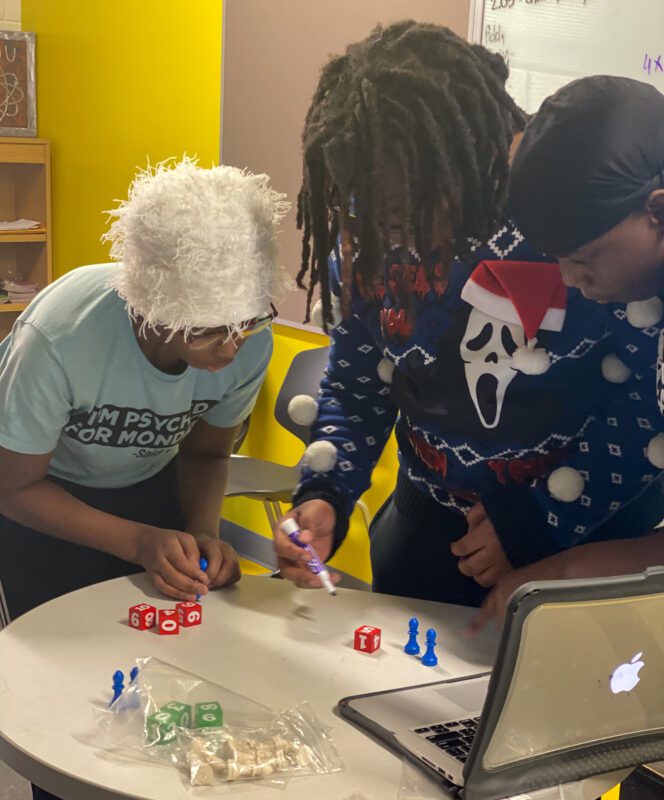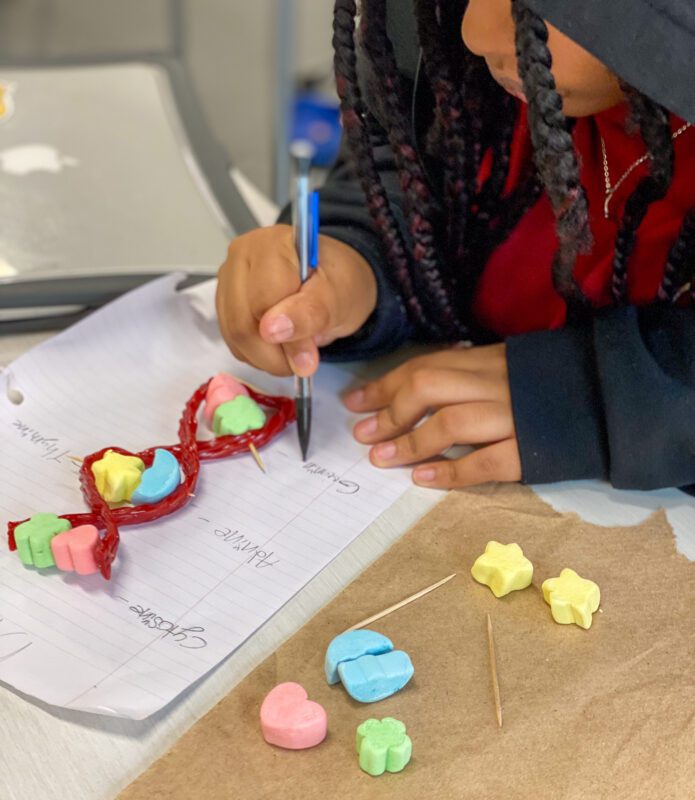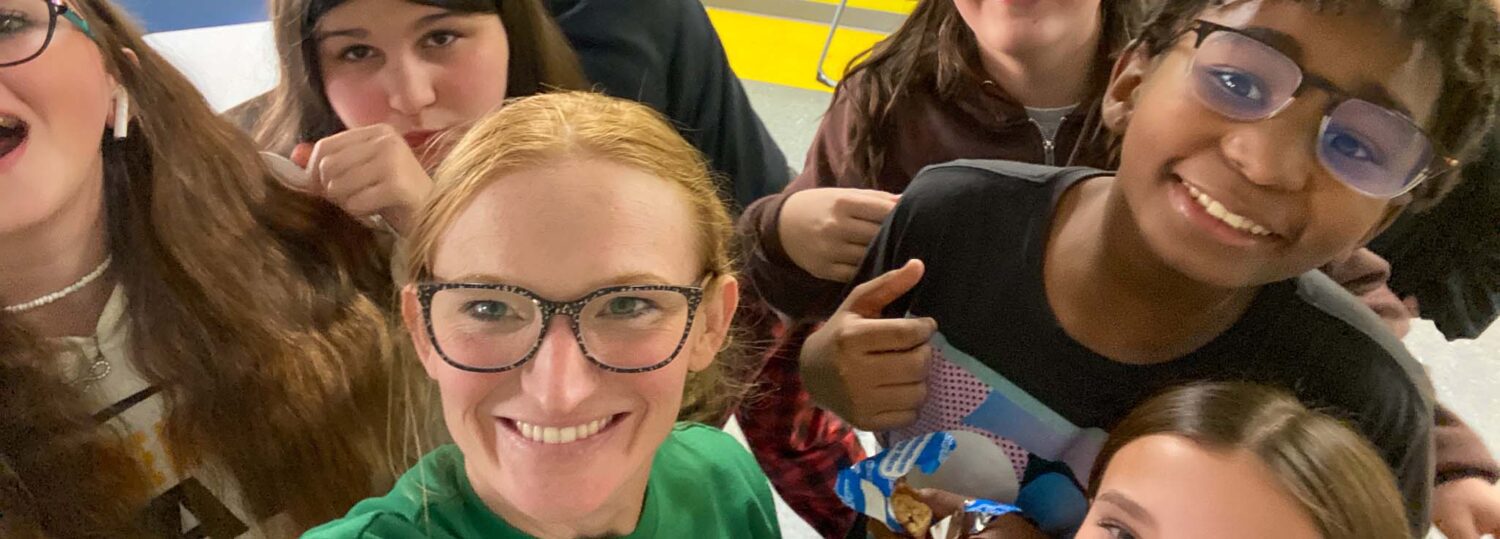Kenan Fellows plan and execute inventive lessons that ignite students’ curiosity, prompt critical thinking and involve them in inquiry-based learning. Our Teacher Innovator Spotlight showcases a Kenan Fellow making noteworthy contributions in their classrooms and inspiring students to contribute towards shaping a better future.
This month, we highlight Angela Ramey Peel who uses storytelling to engage her students in math and science. SparkNC supported her fellowship.
Angela Ramey Peel teaches seventh-grade math and science at Selma Burke Middle School at Mooresville City Schools. Peel has been an educator for 15 years and is a 2023-24 Kenan Fellow. She has presented at conferences such as the N.C. Council of Teachers of Mathematics, NCTies, and the Friday Institute. Inspired by her students, she wrote the book, “Like a River, You Matter.” She enjoys gardening with her husband. The couple also host the podcast, “Peel Gardens Podcast.”
How do you foster a sense of curiosity and inquiry among your students? Build suspense. Share a story. I never come right out and tell them the “punch line” or skip to the ending. I engage them through storytelling. Specifically during a science lab, I may reveal one item/material at a time that will be used in the experiment. Then I’ll ask, what do you think we are going to do today? They enjoy guessing the possibilities.
Describe a time you helped a student connect with the content and how that made you feel as an educator.
We were learning the surface area of 3D shapes. So, I brought a rectangular prism from my mattress box to the classroom. I even placed myself inside the box and popped out, showing that inside was the volume. The surfaces or faces of the box represented surface area. We measured different shaped boxes that day and figured out the surface area. Then, we were able to compare. Students remembered the difference.
On another occasion, I facilitated a project demonstrating the value of pi. We created a circle with a given radius. We began by creating a circle with a given radius. Subsequently, squares were cut out, each having side lengths equal to the radius. Students colored each square differently. As a puzzle, they took the four squares and arranged them inside the circle, with the challenge of not allowing the pieces to overlap.
Observing the process, they discovered that they could fit three full squares inside the circle, along with a little leftover from the fourth square. It was fun watching the students making connections and realizing the consistent results among their peers. I find it gratifying when we can connect a concept in a way that makes it memorable. From that moment on, they grasped the understanding that pi is 3.14.





Can you share a specific challenge you faced when implementing hands-on or inquiry-based learning?
It was rocket launching day. We had all the materials from the launchpad, parachutes, igniters, engines, rockets, etc. We watched a cool NASA video beforehand. We were pumped and ready. But during the launch not all the rockets launched as expected. What was cool though, was all of my students still celebrated. We discussed beforehand that there could be a failed launch. I prepared them with questions for troubleshooting their rockets: Are the igniters fully touching the metal? Were the batteries fully charged? Instead of focusing on what went wrong, they focused on what we do better the next time.
Could you recount a specific experience during your Kenan fellowship that impacted your teaching approach?
The Summer Institute is a professional learning experience I will never forget. The institute rejuvenated me. We created a graffiti wall with painter’s tape. It was a simple exercise, yet it made a big impression on me. It gave me the space to reflect on my teacher leadership journey. My graffiti wall represented “sparks” resembling fireworks. Watching fireworks is always something I enjoy. I related that image to teaching. We have the opportunity and privilege to create space in our classrooms and schools to spark a curiosity for learning. We get to be “that” teacher who creates memories for students that they will never forget.
Discuss how your students have benefited from the knowledge and skills you gained during your Kenan fellowship.
During the Summer Institute, we had a scavenger hunt using the Goosechase app. It inspired me to create similar collaborative experiences with my students. At the Fall Institute, we had a session on building a positive school culture with Phil Boyte of Learning for Living. He gave us so many great strategies for engaging students that I began to use right away when I returned to my classroom. He modeled how to bring collaboration and a compassionate spirit into the classroom. I use his techniques any time I do group work.

